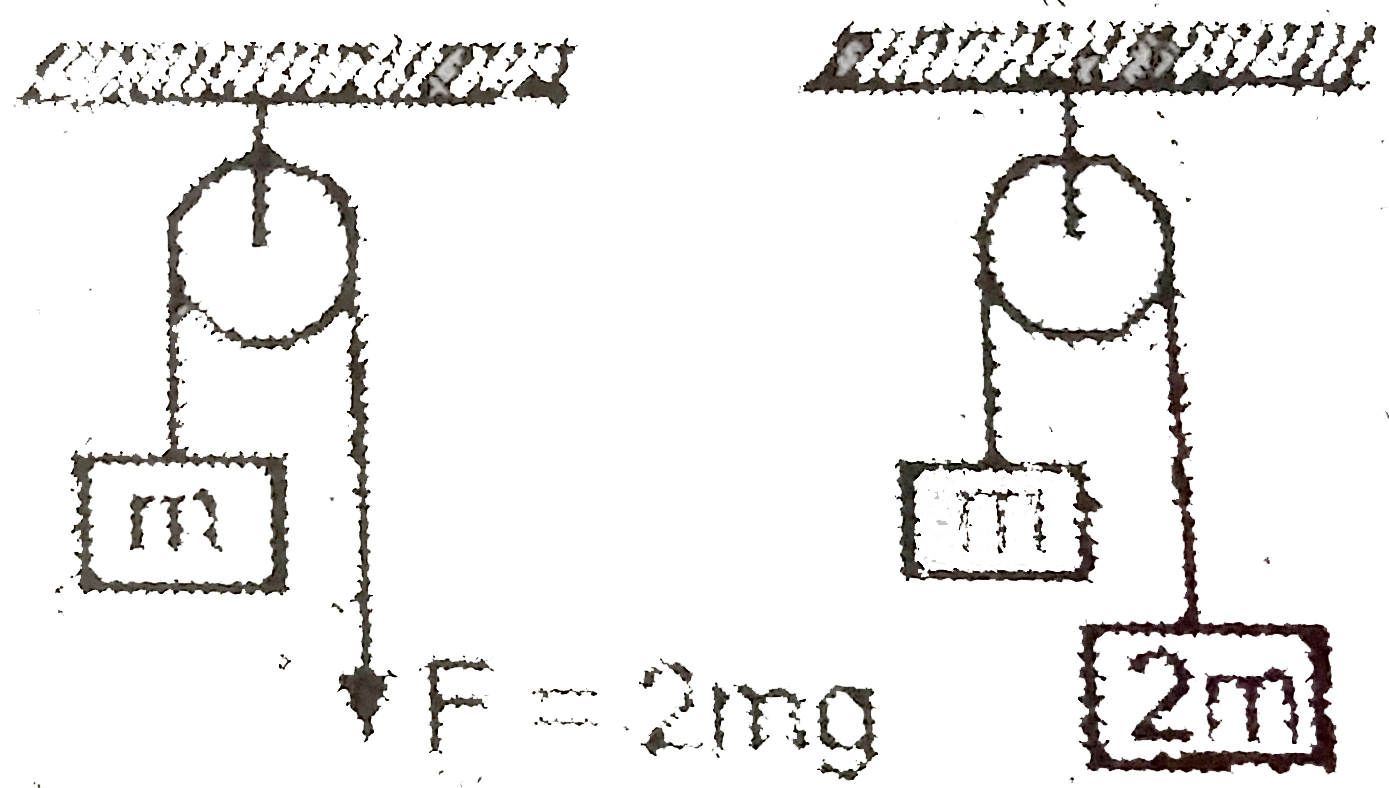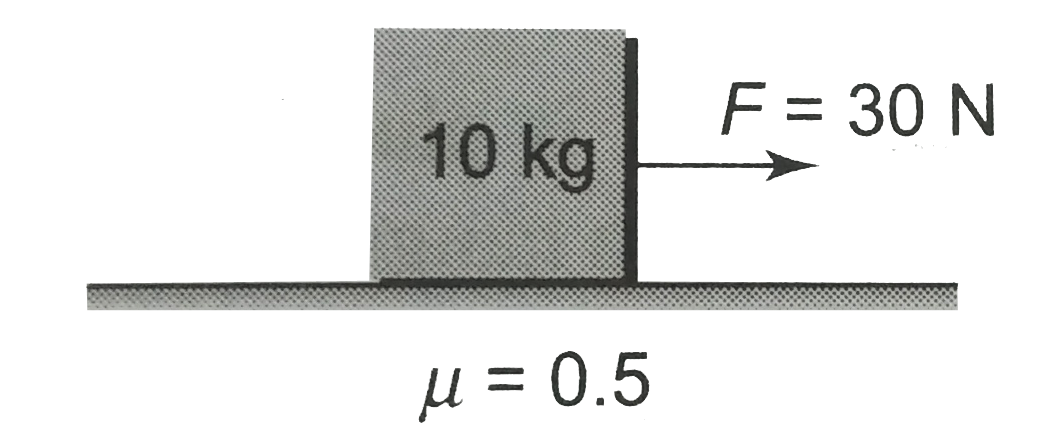Determine the magnitude of frictional force and acceleration of the block in each of the following cases :

a.fmax=μN=(0.2)(100)=20N
Since mg>fmax therefore, friction force is equal to fmax i.e.f=fmax=20N
b. fmax=μN=0.2×500=100N
Since mg<fmax therefore, friction force is equal to mg The mean that f=mg=50N

c. fmax=μN=(μ100cos30∘)=(0.2)(100)√32=10√3N
Since the vertical component of the external force 100sin30∘=50N can balance the weight of the block , therefore f=0
Topper's Solved these Questions
- BOOK - CENGAGE PHYSICSCHAPTER - NEWTON'S LAWS OF MOTION 2EXERCISE - Exercise 7.216videos
NEWTON'S LAWS OF MOTION 2
- BOOK - CENGAGE PHYSICSCHAPTER - NEWTON'S LAWS OF MOTION 2EXERCISE - Exercise 7.327videos
NEWTON'S LAWS OF MOTION 2
- BOOK - CENGAGE PHYSICSCHAPTER - NEWTON'S LAWS OF MOTION 2EXERCISE - Solved Examples12videos
NEWTON'S LAWS OF MOTION 2
- BOOK - CENGAGE PHYSICSCHAPTER - NEWTON'S LAWS OF MOTION 1EXERCISE - Integer5videos
NEWTON'S LAWS OF MOTION 1
- BOOK - CENGAGE PHYSICSCHAPTER - PROPERTIES OF SOLIDS AND FLUIDSEXERCISE - INTEGER_TYPE2videos
PROPERTIES OF SOLIDS AND FLUIDS
Similar Questions
A 2.5 kg block is initially at rest on a horizontal surface. A horizontal force →F of magnitude 6.0 N and a vertical force →P are then applied to the block (Fig. 6-31). The coefficients of friction for the block and surface are μ=0.40andμ=0.25. Determine the magnitude of the frictional force acting on the block if the magnitude of →P is (a) 8.0 N. (b) 10 N, and (c) 12 N
 View Solution
View SolutionThe frictional force acting on 1 kg block is
 View Solution
View Solution
Knowledge Check
- Question 1 - Select One
The magnitude of difference in accelerations of block of mass m in both the cases shown below is
 AgB2g3CzeroDg/31
AgB2g3CzeroDg/31 - Question 2 - Select One
As shown in the figure , the friction force acting on the block is
 A50NB30NC20NDNone
A50NB30NC20NDNone - Question 3 - Select One
Assertion: Magnitude of the contact force is always greater than the magnitude of frictional force.
Reason: Contact force is the resultant of the friction force and normal reaction.AIf both assertion & Reason are True & the Reason is a corrrect explanation of the Asserion.BIf both Assertion & Reason are True but Reason is not correct explanation of the Assertion.CIf Assertion is Trie but the Reason is False.DIf both Assertion & Reason are false
Friction force acting on the block is?
View SolutionA block of mass 2kg is placed on a trolley of mass 20 kg free to move on a frictionless floor. What are the frictional force, accelerations of the block and trolley if the block is pulled by a force of 3 N ? The coefficient of friction between block and trolley is 0.25. What will be the values of all three if the block is pulled by 8 N force ? At what value of the applied force will the bodies just tend to separate ?
[Hint : So long as the force applied does not produce the limiting frictional force the two will move with common acceleration. When the force applied exceeds that limiting value the block will move on the trolley with a different acceleration]View SolutionRead each case given below and mention the directional and magnitude of frictional force that would act between the surfaces in each case. (one has been doen for you)
A stationary rock is being pushed, towards the right, with a force of 100NView SolutionRead each case given below and mention the directional and magnitude of frictional force that would act between the surfaces in each case. (one has been doen for you)
A table is being dragged across the floor, towards the left, with a force of 65N.View SolutionRead each case given below and mention the directional and magnitude of frictional force that would act between the surfaces in each case. (one has been doen for you)
A stationary box is being pulled, towards the left, with a force of 20NView Solution

